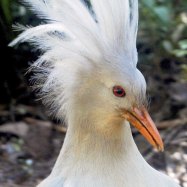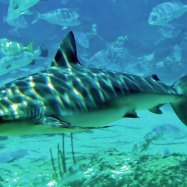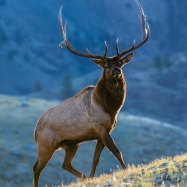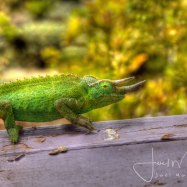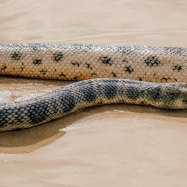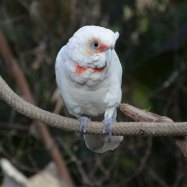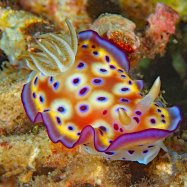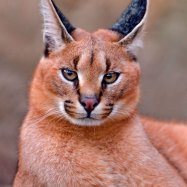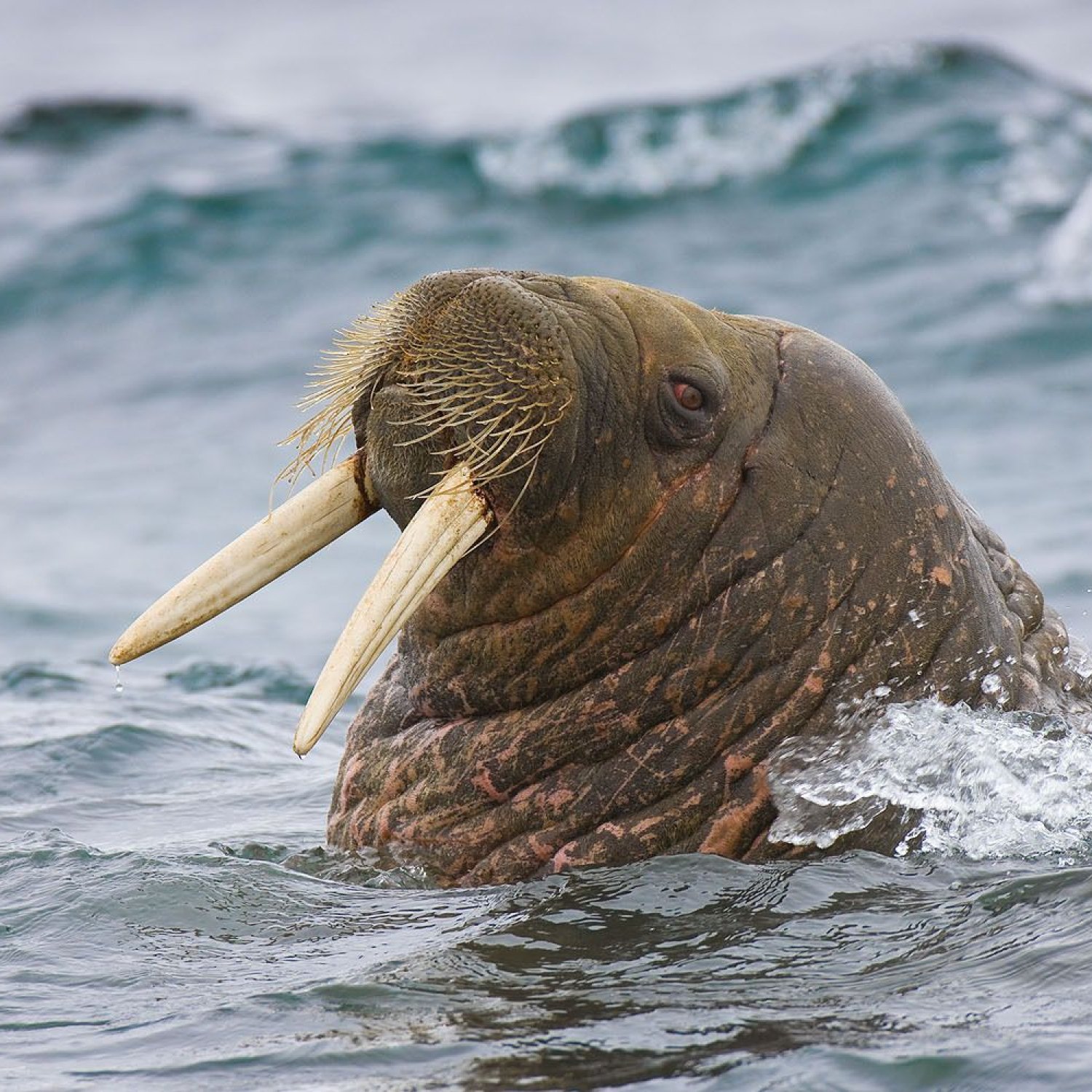
Walrus
9 to 12 feet
The walrus, known for its large and robust body shape, is a fascinating animal found in the North Atlantic and North Pacific Oceans. With a length of 9 to 12 feet, these creatures belong to the family Odobenidae. Get to know more about these gentle giants and their unique characteristics. #walrus #oceananimals #wildlife #naturefacts
Animal Details Summary:
Common Name: Walrus
Kingdom: Animalia
Habitat: Arctic and Subarctic Coastal Areas
The Mighty Walrus: A Fascinating Arctic Giant
The freezing waters of the Arctic and Subarctic seas are not only home to polar bears, seals, and whales, but also to a large and robust marine mammal - the walrus. With its distinctive tusks and unique appearance, the walrus has captured the imagination of humans for centuries. In this article, we will delve into the fascinating world of this magnificent creature and uncover its remarkable features.Scientifically known as Odobenus rosmarus, the walrus belongs to the animal kingdom, phylum Chordata, and class Mammalia, placing it in the same category as other mammals such as dolphins, elephants, and humans Walrus. It belongs to the order Carnivora and the family Odobenidae, which translates to "tooth-walking sea cow," due to its ability to use its tusks to move over short distances by "walking" on land. This unique creature can be found in the Arctic and Subarctic coastal areas, primarily in the Arctic Ocean and the North Pacific and North Atlantic Oceans.
One of the most distinctive features of the walrus is its tusks, which can grow up to 3 feet in length and weigh up to 12 kilograms. These ivory tusks are actually enlarged canine teeth and are present in both male and female walruses. However, they are more prominent and thicker in males, and they use them for various tasks such as breaking through the ice, digging for food, and during mating rituals.
The walrus's body is designed to survive in the harsh Arctic environment. They have a thick layer of blubber under their skin, which helps them regulate their body temperature and keep warm in the freezing waters. Their coloration also aids in camouflage, with a brown or pinkish-gray coat that blends in with the surrounding ice and snow.
These majestic creatures are also well-known for their impressive size West Highland Terrier. An adult male walrus can weigh up to 1.5 to 2 tons, making them the second-largest species of seal after the elephant seal. They can grow up to 9 to 12 feet in length, with a flipperspan of 3 to 4 feet. Despite their large size, walruses are agile swimmers, capable of diving up to 330 feet to feed on the ocean floor.
As seen in their scientific name, the walrus's most distinctive feature is its long and sharp tusks. However, these tusks serve a variety of purposes, from self-defense to locating food. The walrus is a carnivorous animal, with a diet consisting mostly of clams, mussels, and other shellfish. They use their impressive tusks to break open shells and dig through sediment to access their food. These tusks also serve as an important defense mechanism against predators, such as polar bears and orcas.
Aside from their tusks, walruses also have a unique method of feeding called suction feeding. This involves creating a vacuum with their mouth, which allows them to suck in and swallow their prey underwater. This feeding method is highly efficient and allows the walrus to consume a large quantity of food in one go.
The walrus's habitat consists of the Arctic and Subarctic coastal areas, where it can often be seen basking in the sun on ice floes. They often spend up to two-thirds of their lives in the water, coming to shore only to rest and give birth. Walruses are excellent swimmers, capable of swimming for hours at a time without resting. However, they are unable to swim long distances and often rely on floating ice to rest and catch their breath.
The geographical distribution of the walrus includes the Arctic Ocean and the subarctic seas, including the waters of Russia, Canada, Alaska, and Greenland. Historically, they could be found in even more areas, such as parts of Europe and Asia, but due to human hunting and habitat destruction, their range has significantly decreased. Currently, the walrus population is estimated to be around 200,000 individuals, with the majority living in the Arctic.
One of the most interesting aspects of the walrus is its social behavior. These creatures are highly social and can often be seen in large groups, also known as herds or pods. Walruses are very vocal animals, and they use a variety of sounds, such as barks, growls, and grunts, to communicate with each other. They also have a strong maternal bond, with female walruses nursing their calves for up to two years. These social creatures also have a playful side, and can often be seen engaging in activities such as "tusking," where they use their tusks to playfully spar with each other.
The walrus is a vital part of the Arctic ecosystem, and its well-being is crucial to the balance of this fragile environment. However, like many other animals, they face numerous threats, including climate change, habitat loss, and human activities such as hunting and pollution. Currently, the walrus is listed as a "vulnerable" species by the International Union for Conservation of Nature (IUCN). Strict conservation measures are necessary to ensure the survival of these majestic creatures for generations to come.
In conclusion, the walrus is a magnificent creature that has captured the hearts of people around the world with its unique appearance, impressive size, and interesting behaviors. From its majestic tusks to its playful nature, the walrus is a true symbol of the Arctic and an incredible force of nature. As we continue to learn more about these creatures, let us also strive to protect and preserve their fragile habitat for future generations to enjoy.

Walrus
Animal Details Walrus - Scientific Name: Odobenus rosmarus
- Category: Animals W
- Scientific Name: Odobenus rosmarus
- Common Name: Walrus
- Kingdom: Animalia
- Phylum: Chordata
- Class: Mammalia
- Order: Carnivora
- Family: Odobenidae
- Habitat: Arctic and Subarctic Coastal Areas
- Feeding Method: Carnivorous
- Geographical Distribution: Arctic Ocean and Subarctic Seas
- Country of Origin: Russia, Canada, Alaska, Greenland
- Location: North Atlantic and North Pacific Oceans
- Animal Coloration: Brown or pinkish-gray
- Body Shape: Large and robust
- Length: 9 to 12 feet
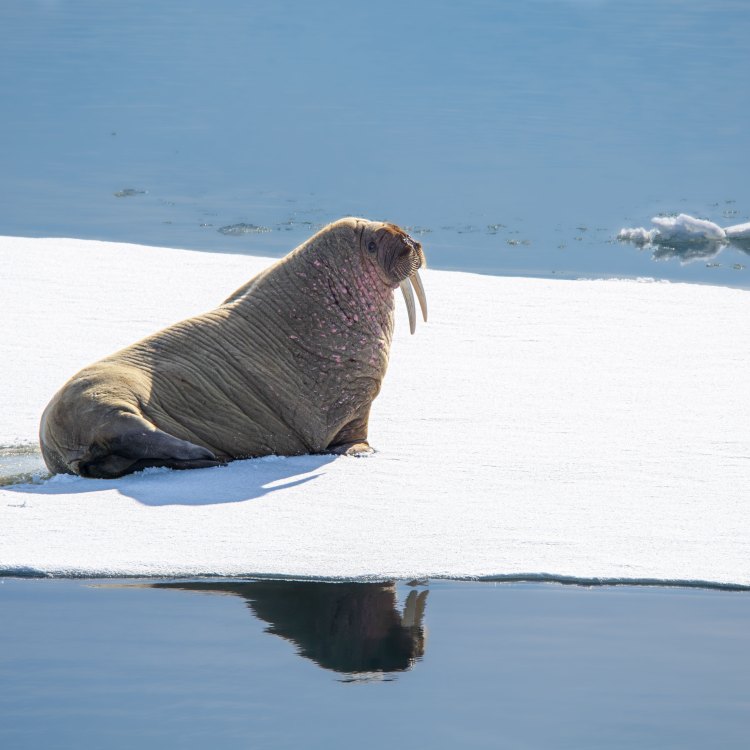
Walrus
- Adult Size: Up to 3,000 pounds
- Average Lifespan: 25 to 30 years
- Reproduction: Sexual
- Reproductive Behavior: Polygynous
- Sound or Call: Loud bellowing sounds
- Migration Pattern: Seasonal migration
- Social Groups: Form large herds
- Behavior: Gregarious and social
- Threats: Climate change, hunting
- Conservation Status: Vulnerable
- Impact on Ecosystem: Important for maintaining the balance of the Arctic marine ecosystem
- Human Use: Hunting for meat and ivory
- Distinctive Features: Long tusks and prominent whiskers
- Interesting Facts: Walrus tusks are actually elongated canine teeth
- Predator: Killer whales, polar bears
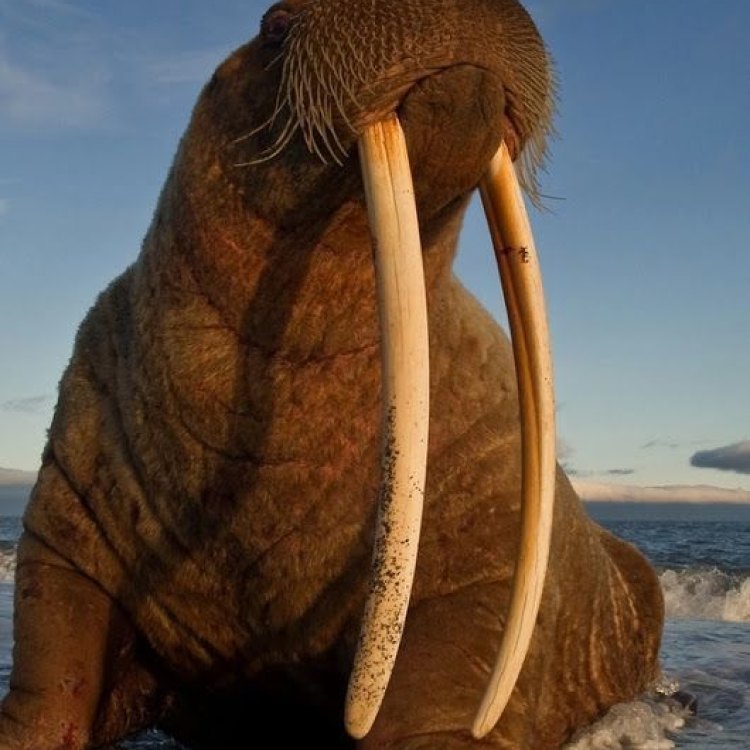
Odobenus rosmarus
The Mighty Walrus: A Look at the Physiology, Behavior, and Conservation of an Arctic Icon
The walrus, with its massive size and distinctive features, has captured the fascination and admiration of humans for centuries. Often depicted as a giant, clumsy creature, the walrus is actually a highly complex and social animal that plays a vital role in the Arctic ecosystem. In this article, we will dive into the unique features of the walrus, its behavior and threats, and the importance of its conservation.Physiology and Reproduction
The walrus (Odobenus rosmarus) is a large marine mammal that belongs to the order Carnivora and is the only living species in the Odobenidae family PeaceOfAnimals.Com. They can weigh up to a staggering 3,000 pounds, making them the second-largest pinniped after the elephant seal. These massive animals have a height of 7-12 feet and can reach a length of 10-12 feet.
One of the most distinctive features of the walrus is its long, ivory tusks. These tusks are not actually teeth, as one might assume, but they are elongated canine teeth that can grow up to 3 feet in length and are used for a variety of purposes, such as for digging in the sea floor for food and for climbing on ice. Both male and female walruses have tusks, with the males having longer and thicker tusks. Interestingly, the tusks continue to grow throughout the walrus' lifetime, with the older individuals having the longest tusks.
Walruses also have prominent whiskers, known as vibrissae, which are highly sensitive and help them detect their prey in the dark and murky waters. These whiskers are made up of stiff, straight hairs that can grow up to 24 inches in length.
Walruses are polygynous, meaning that one male mates with multiple females Writing Spider. The breeding season for walruses usually occurs in the spring, and the females give birth to one calf every 2-3 years. The females reach sexual maturity at around 6-7 years, whereas the males reach sexual maturity at 8-10 years.
Behavior
Walruses are gregarious and social animals, and they form large herds known as "haulouts." These haulouts can consist of thousands of individuals and are usually found on sea ice or on land. Despite their large size, walruses are surprisingly agile and can move quickly and gracefully underwater.
Another interesting behavior of walruses is their seasonal migration pattern. During the winter, when the sea ice becomes too thick for them to break through, they migrate to the south and then return to the Arctic in the spring. This migration not only allows them to access different food sources, but it also helps them avoid predators, such as killer whales and polar bears.
Threats and Conservation
Despite their size and strength, walruses face several threats to their survival. The biggest threat to walruses is climate change, which is causing the Arctic sea ice to melt at an alarming rate. This has a significant impact on walruses as they rely on sea ice for resting, breeding, and hunting for food. As the sea ice decreases, walruses are forced to swim longer distances to find suitable habitats, leading to exhaustion and increased mortality rates.
Another threat to walruses is hunting, both for meat and ivory. In the past, walruses were heavily hunted for their ivory, which was used for making various products, such as piano keys, billiard balls, and even false teeth. Although the trade of walrus ivory is now heavily regulated, illegal hunting still occurs in some areas, posing a threat to the walrus population.
Due to these threats, the walrus is currently listed as vulnerable on the International Union for Conservation of Nature (IUCN) Red List. It is estimated that there are around 200,000 to 250,000 walruses left in the wild, with the largest population found in the Arctic Ocean. To protect this iconic species, conservation efforts are crucial, including reducing greenhouse gas emissions, enforcing hunting regulations, and protecting their habitats.
Importance to Ecosystem
Walruses play a vital role in maintaining the balance of the Arctic marine ecosystem. As they feed on clams, mussels, and other bottom-dwelling creatures, they help keep these populations in check. This, in turn, helps maintain a healthy diversity of other marine species, making walruses a crucial part of the complex Arctic food web.
Additionally, walruses create openings in the sea ice by breaking it with their tusks, allowing other marine mammals, such as seals and polar bears, to access the water and hunt for food. These openings also provide a crucial breathing space for marine mammals that need to come up to the surface for air.
Interesting Facts
Apart from their distinctive tusks and whiskers, walruses have some other interesting features and behaviors. For instance, they are known for their loud bellowing sounds, which can be heard up to a mile away. Male walruses, in particular, make these sounds during the breeding season to attract females and establish dominance.
Another interesting fact about walruses is that they are the only pinnipeds that can turn their hind flippers forward, making them adept at walking on land and ice. This gives them an edge when it comes to hauling their massive bodies out of the water.
Predators
Although walruses' sheer size and strength make them a formidable species, they have their own set of predators. The main predators of walruses are killer whales and polar bears. While killer whales mainly target young or injured walruses, polar bears have been known to attack and kill adult walruses when they are on land or floating on small pieces of ice.
In Conclusion
From their massive size and distinctive tusks to their gregarious behavior and vital role in the Arctic ecosystem, there is no denying that walruses are truly fascinating creatures. However, with increasing threats to their survival, it is crucial for us to recognize their importance and take action to protect them. Let us all do our part in conserving this iconic species and ensuring that they continue to roam the Arctic seas for generations to come.
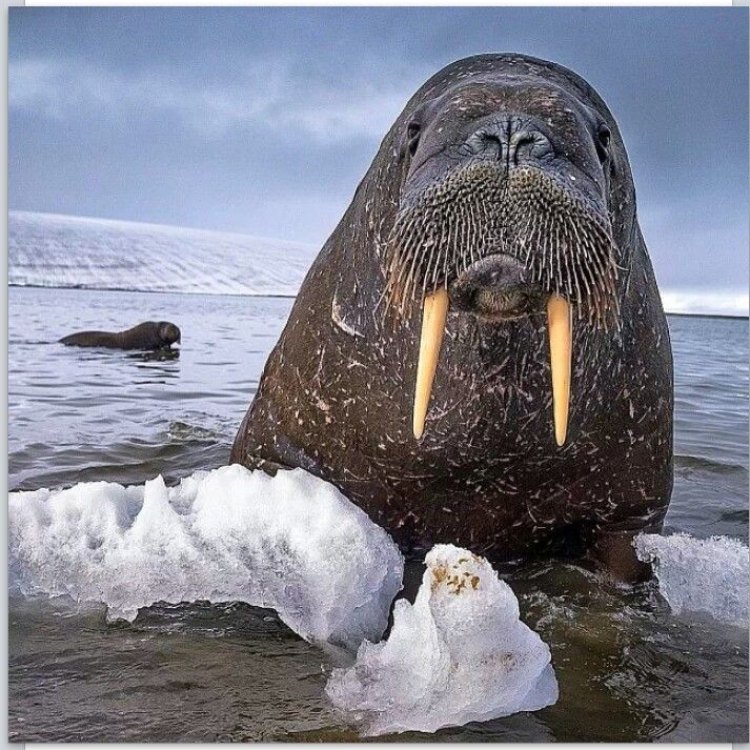
The Mighty Walrus: A Fascinating Arctic Giant
Disclaimer: The content provided is for informational purposes only. We cannot guarantee the accuracy of the information on this page 100%. All information provided here may change without prior notice.


